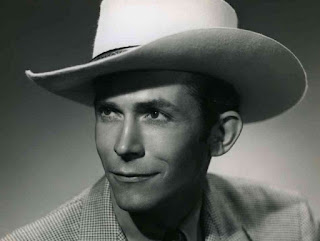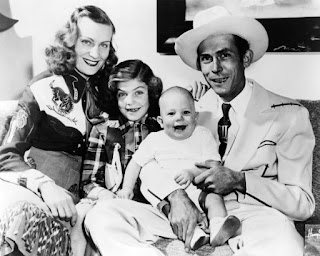Tom Hiddleston takes on the role of a lifetime in the upcoming biopic I Saw the Light. After the first look photo released back in August, Sony Pictures Classics, via Entertainment Weekly, has released the first trailer. I Saw the Light is set for a limited release on March 25, 2016. I Saw the Light tells the story of the legendary country western singer Hank Williams, who in his brief life created one of the greatest bodies of work in American music. The film chronicles his meteoric rise to fame and its ultimately tragic effect on his health and personal life. The beloved singer died at the age of 29 in 1953, but not before leaving a legacy of hit songs such as "Your Cheatin' Heart", "I'm So Lonesome I Could Cry" and "Hey Good Lookin." When Tom Hiddleston signed on to star last June, it was revealed that the actor will actually be singing Hank Williams' iconic songs himself.
The producers struck a deal with Sony ATV for the rights to Hank Williams' entire music catalog for use in the film. The supporting cast includes Elizabeth Olsen, Bradley Whitford, David Krumholtz and Cherry Jones. Written and directed by Marc Abraham (Flash of Genius), I Saw the Light is based on Colin Escott's award-winning biography. Notable director of photography Dante Spinotti was the cinematographer for the film. Hank Williams' final days were chronicled in the 2012 drama The Last Ride, starring Henry Thomas, but this biopic will chronicle his incredible rise to stardom.
Take a look at the first trailer for I Saw the Light: Source: movieweb.com
From Hank Williams first, then the Chicago bluesmen and finally Elvis, Buddy Holly had learned that words were less important than what one put into them. Buddy wrote about what his peers expected him to – falling for girls, pursuing girls, winning girls, losing girls and feeling blue; his lyrics were always accomplished, phrased with the neatness of the one-time amateur journalist, adding up with the logic and precision of the draughtsman he had almost become. For a creative muse Buddy could not draw on the nervy, neon excitement of Chuck Berry’s Chicago nor Leiber and Stoller’s view down Broadway: only horizonless wheat and cotton fields, the lawns and churches of Lubbock, the archetypal young American’s life-cycle of high school, dating, movies and driveins. It was when he stopped pretending otherwise, when he found the nerve, the encouragement and the space to be himself, that raw talent suddenly blossomed into fully-finished brilliance.
Like Hank Williams, whose “I Saw the Light” is one of his finest recordings, the influence of the Lord and Jesus, as well as the sound of gospel, would influence Buddy’s music. Unfortunately, Buddy’s initial forays into professionalism —the Thompson tour at the beginning of January 1956 and the Nashville recording session at the end of the month— were out-and-out disasters. The Country & Western establishment had been thrown into panic by the sudden ascendancy of rock ’n’ roll and Buddy caught the full impact of the hillbilly backlash. The old guard resisted rock ’n’ roll with all its might; eventually country music would be split down the middle, RCA and at least half of the C&W establishment fleeing to rockabilly and the other half remaining straight country singers. The rockabillies adopted Elvis’s style and mannerisms. The traditionalists took their lead from Hank Williams. Decca’s Paul Cohen and Owen Bradley, instead of recognizing Buddy Holly as as a potential rockabilly star, tried to force him into a C&W mold, completely disregarding his wish to sing rock ’n’ roll. Buddy resisted, and Cohen got nasty, sniping, “You don’t have the voice to be a singer. You should forget about a musical career.”
Buddy Holly - Not Fade Away (1957)
In late January 1959 all the members of the ill-fated “Winter Dance Party” —Buddy Holly, Ritchie Valens, the Big Bopper, Dion and the Belmonts, Frankie Sardo, Waylon Jennings— met in Chicago and checked into their hotel. It was the beginning of rock’s most famous tragedy. As Tommy Allsup revealed at the 1979 convention of the Buddy Holly Memorial Society, Buddy seemed upset. Tommy assumed it was because the tour marked the first time that Buddy and his bride had been separated. It was obvious that Buddy missed the comfortable home he’d established with Maria Elena.
While Buddy Holly’s rise had been slow and torturous, Ritchie Valens’s was meteoric. Their meeting proved opportune for both. Ritchie, the new rock star, looked on Buddy as an experienced headliner who could give him much-needed guidance, while Buddy was always on the lookout for new talent to produce. Everyone was crammed into what appeared to Dion to be a “converted school bus.” When they felt like going to bed, “we slept where we were sitting.” Shivering and miserable, the performers realized too late that the tour was a “third-class operation,” Dion recalled. Buddy was homesick, yearning to return to his bride. All the musicians on the bus generously shared their musical expertise with each other. They sang and picked continually, mostly as a way to keep their minds off the cold. Everyone sang a Hank Williams song. Like Buddy, Dion had studied Hank Williams’s “bent notes” and learned to emulate the “plaintive catch in his throat,” he wrote in The Wanderer. Maria Elena divulged in 1993 that she and Buddy spoke “every day, maybe twice, depending on how much time he had, usually in the evening before he performed.”
Buddy introduced Edwardian fashions to rock ’n’ roll during this tour, years before they became popular in the sixties. He wore an ascot and a greatcoat with a fur collar, displaying a style that was radical, even unthinkable, in an era of Brooks Brothers sack suits and buttondown collars. Tasteful and vaguely aristocratic, Buddy had repeatedly reinvented himself until finally achieving a sort of beauty. Duane Eddy, whose twangy guitar made him rock’s # 1 instrumentalist, saw Buddy at this time and described him, in Reminiscing magazine, as an impressive sight—tall, powerful, and strikingly handsome. As Rolling Stone’s Robert Palmer would write from the perspective of 1990, “It is a measure of fifties rock’s genuine revolutionary potential (as opposed to the revolution-as-corporate-marketing-ploy so characteristic of the sixties) that while sixties rock eventually calmed down, was co-opted or snuffed itself out in heedless excess, fifties rock ’n’ roll was stopped. Cold.” Buddy had founded rock’s avantgarde. —"Rave On: The Biography of Buddy Holly" (2014) by Philip Norman

































































